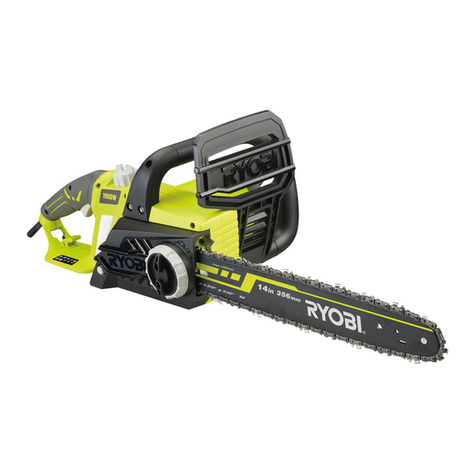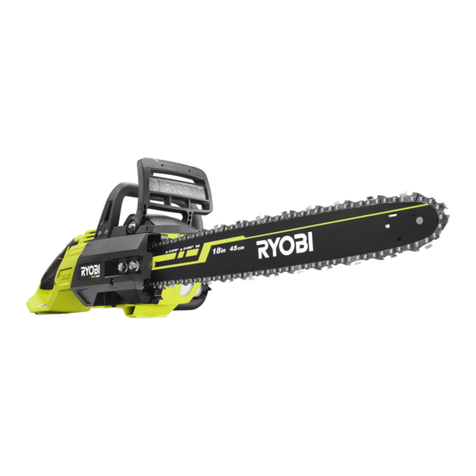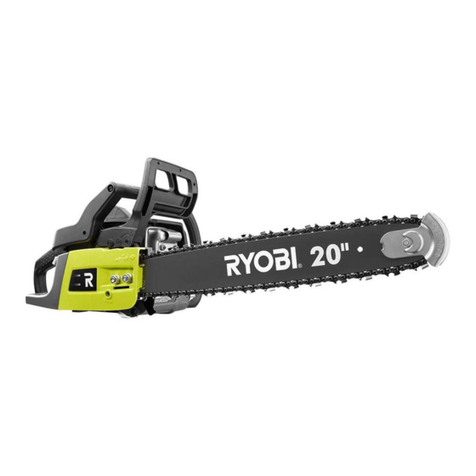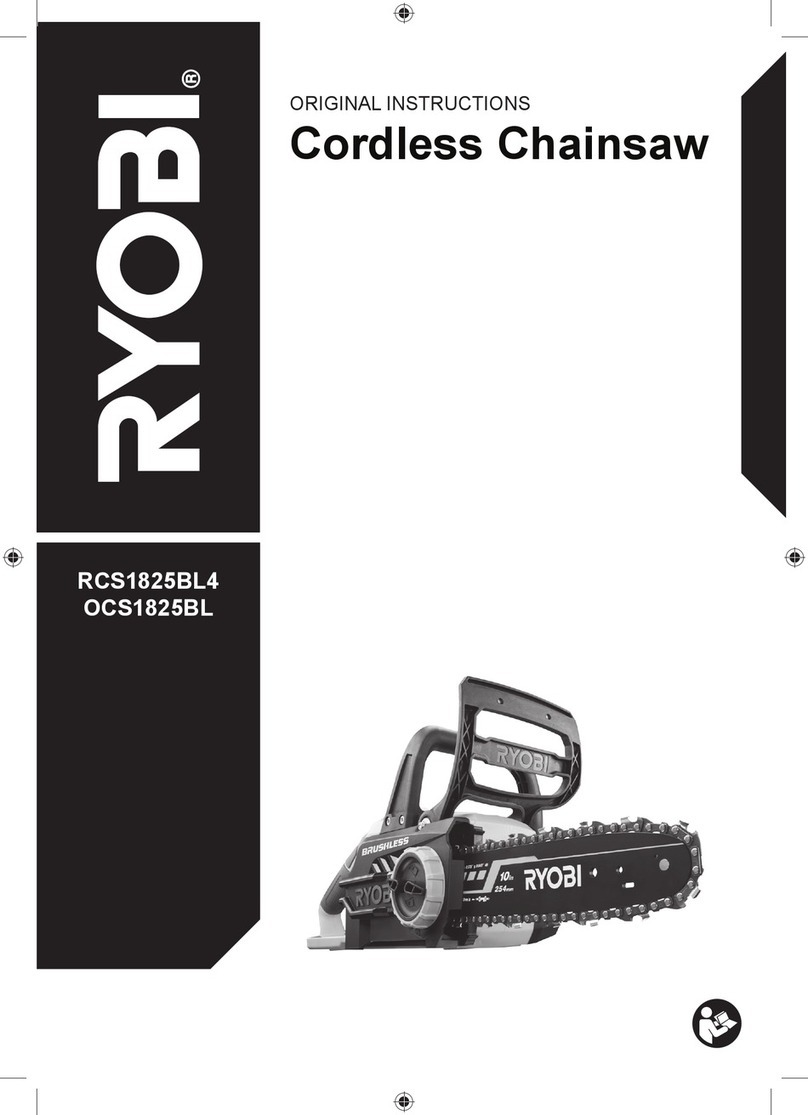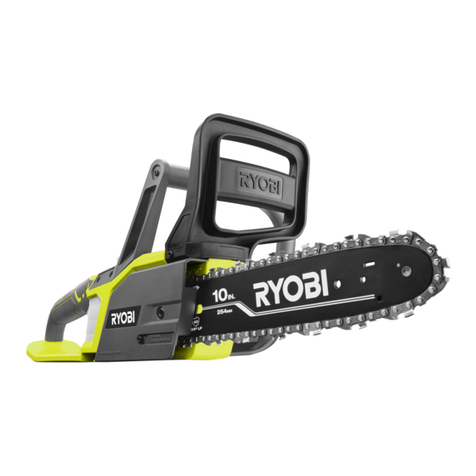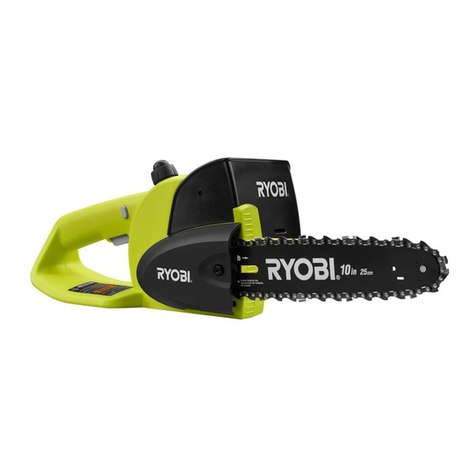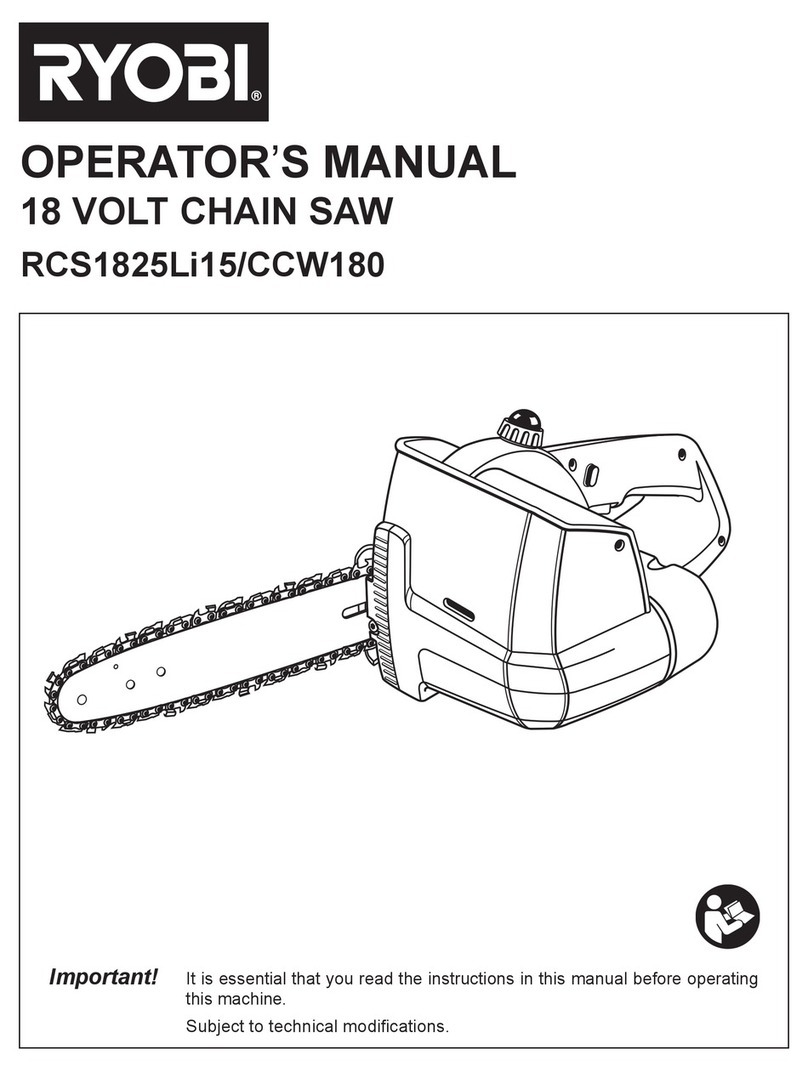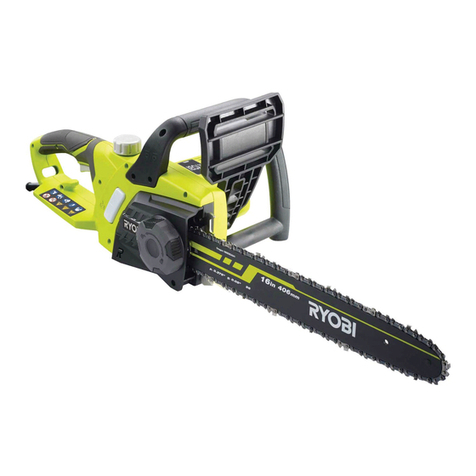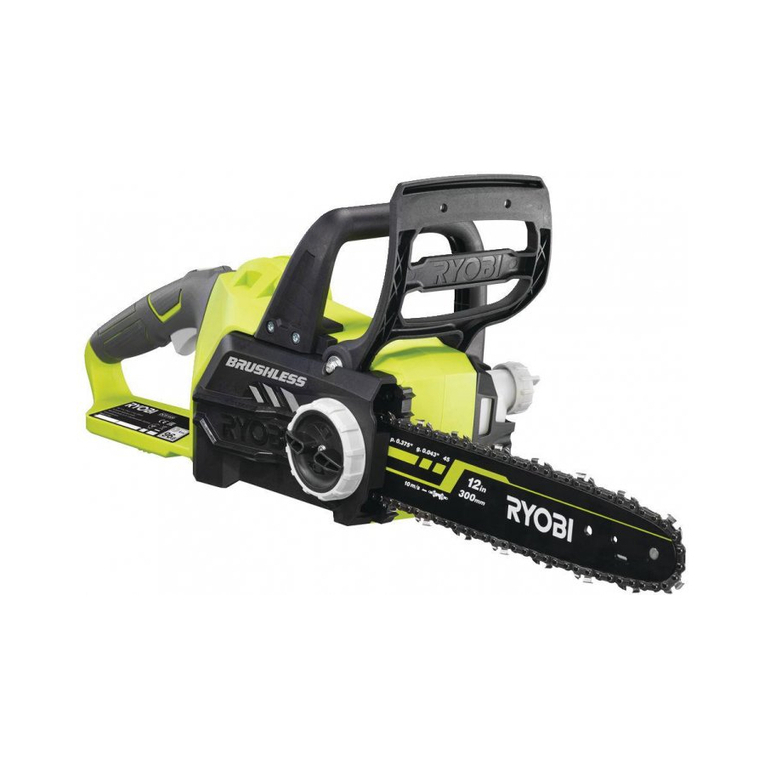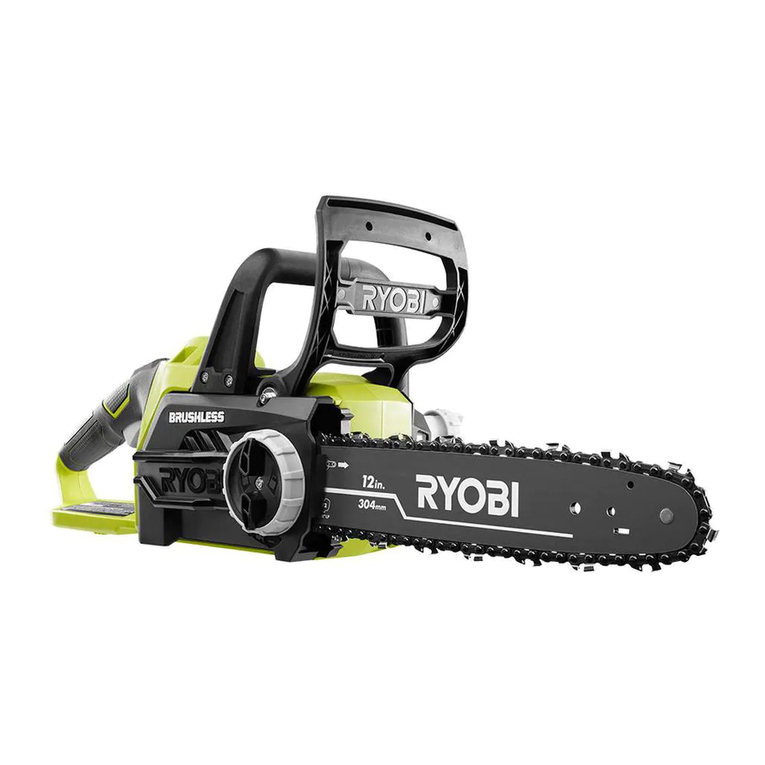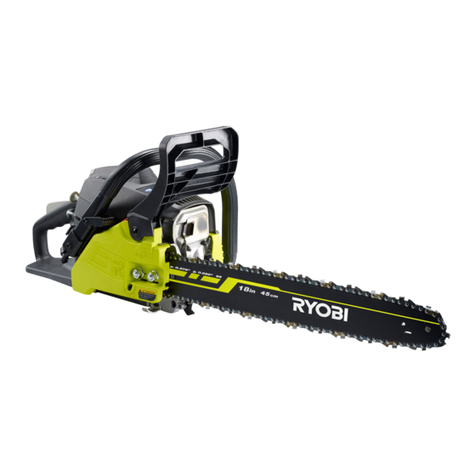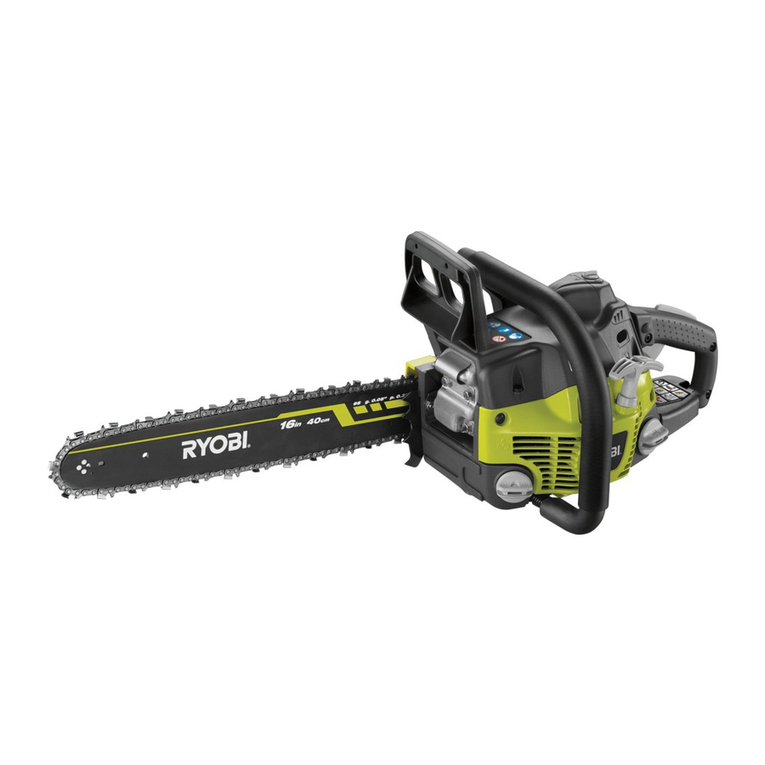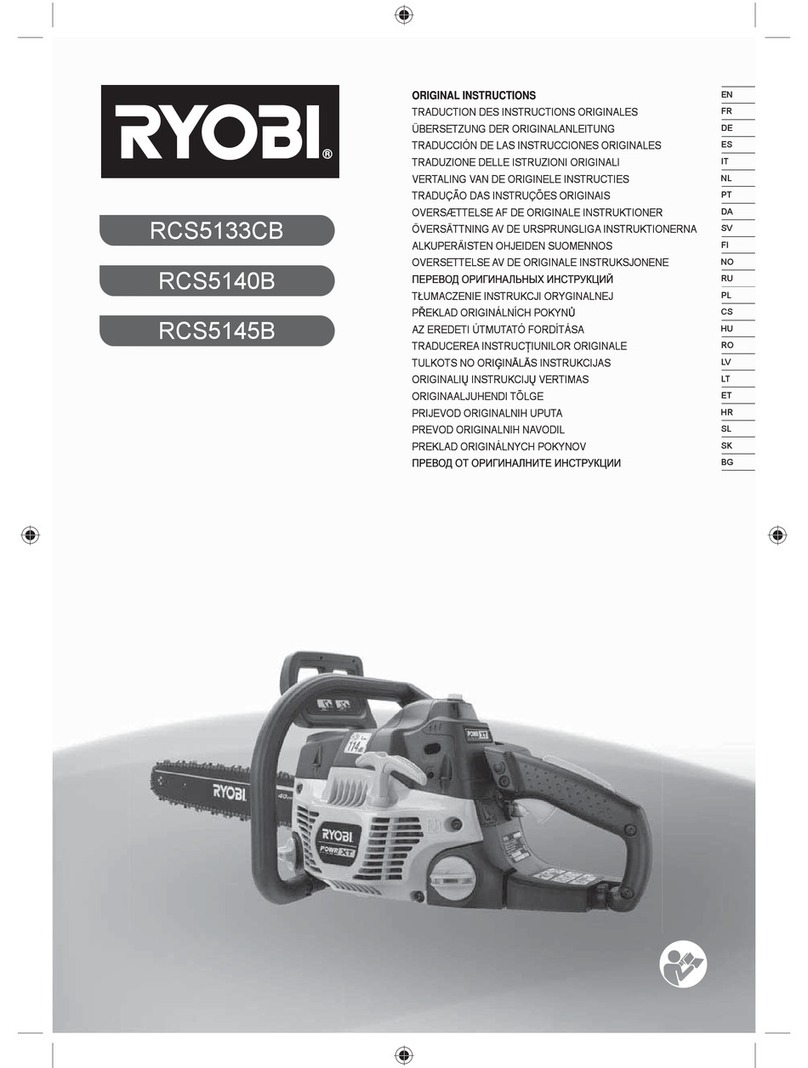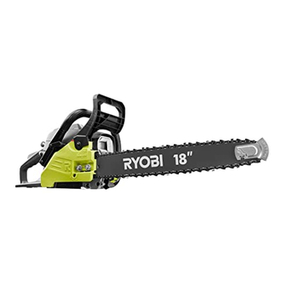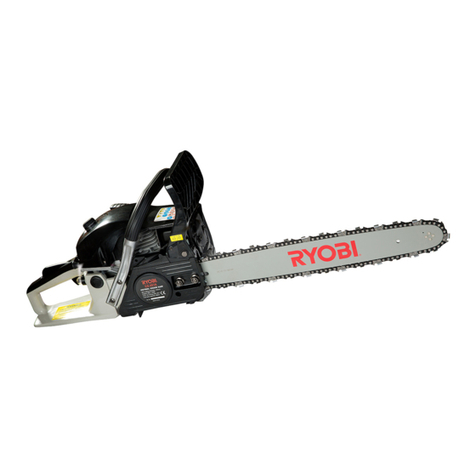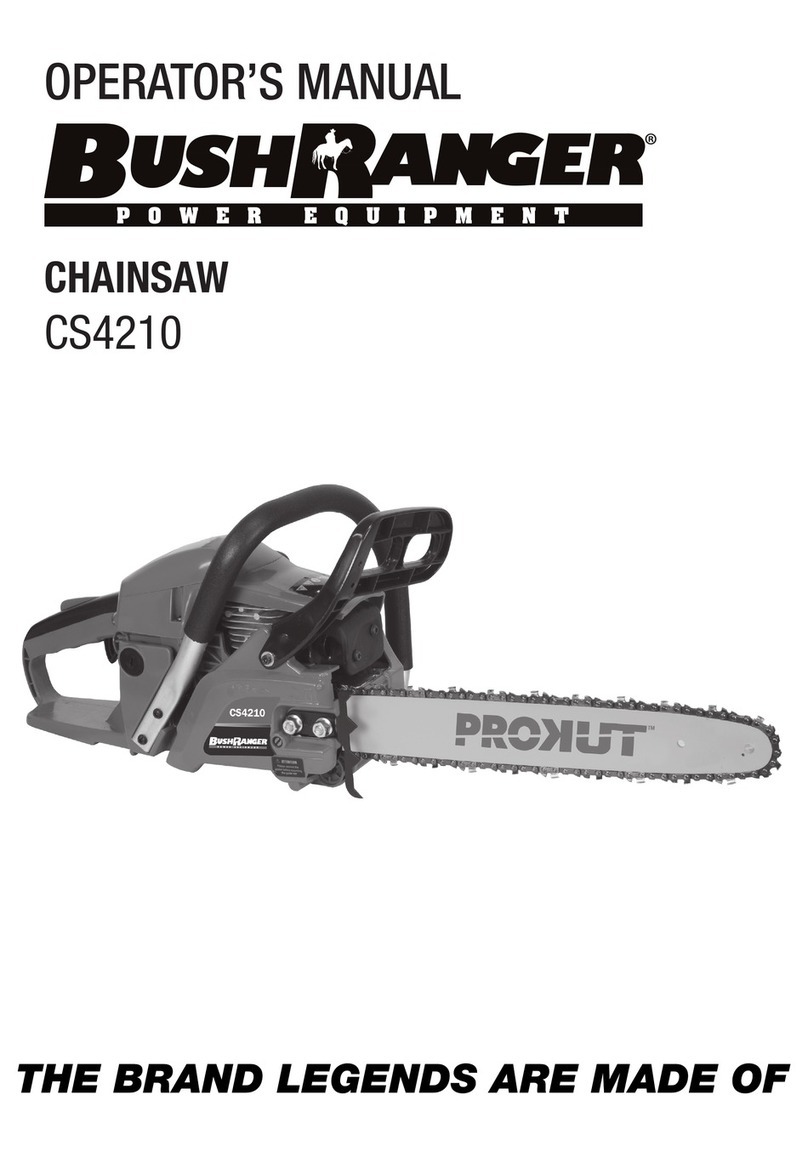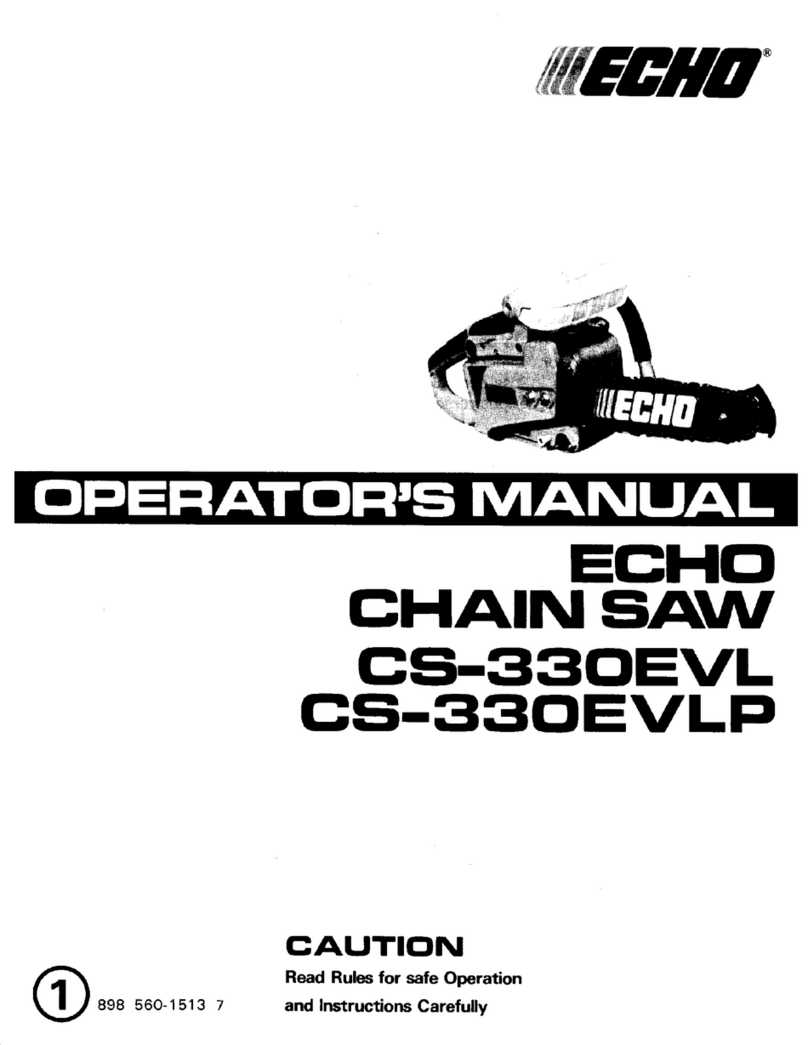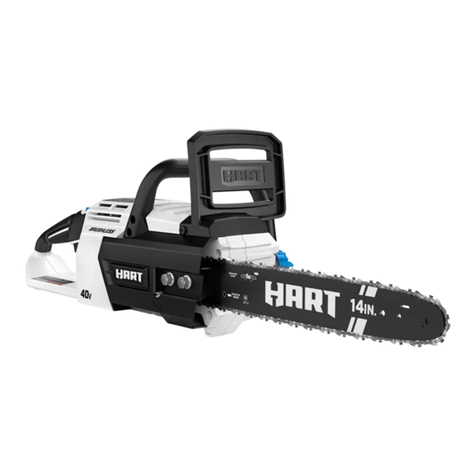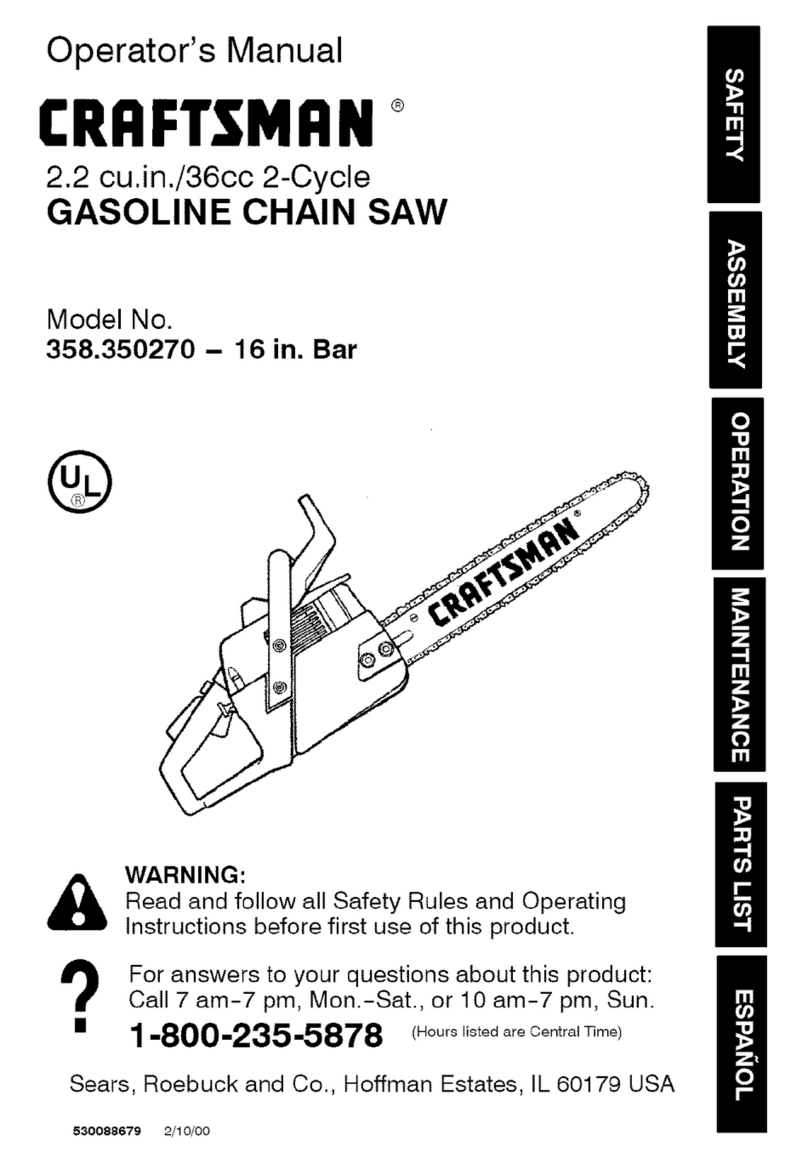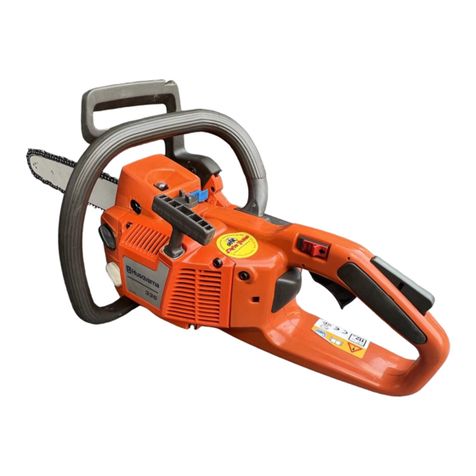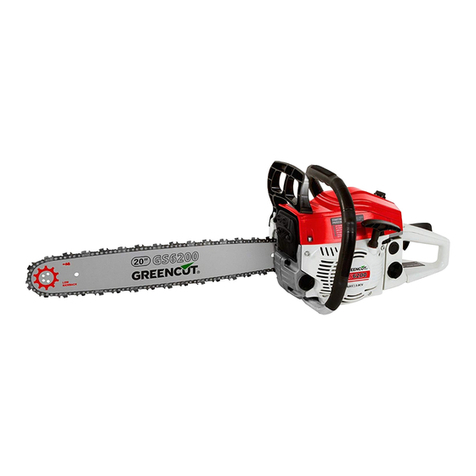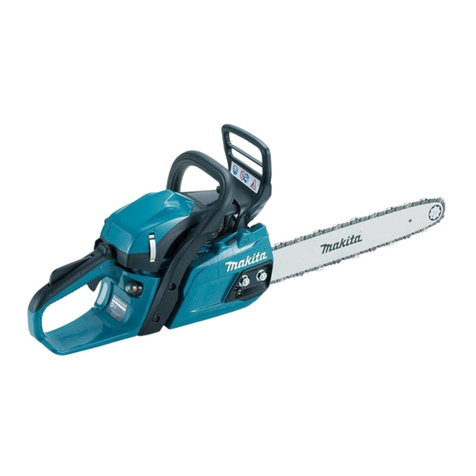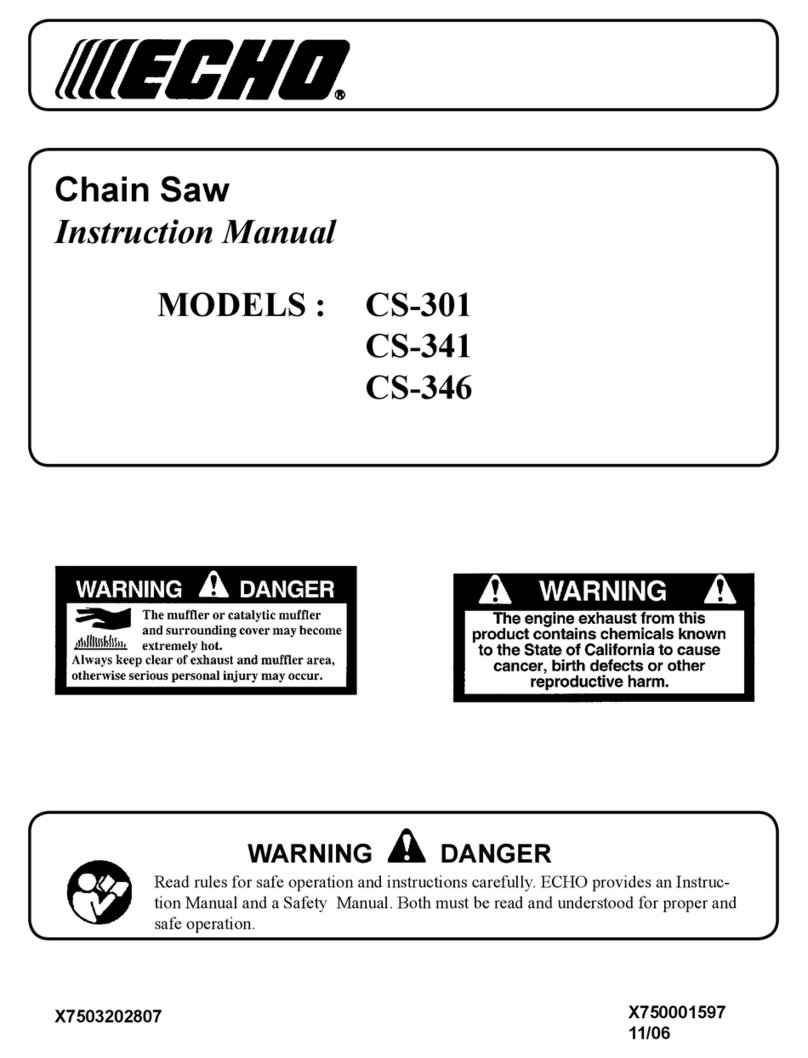
6
underside of the log is compressed and the bers are being
pushed together. If a cut is made in this area, the kerf will
have the tendency to close up during the cut. This would
pinch the blade.
Push and pull
The reaction force is always opposite to the direction the
chain is moving. Thus, the operator must be ready to
control the tendency for the machine to pull away (forward
motion) when cutting on the bottom edge of the bar and the
push backwards (towards the operator) when cutting along
the top edge.
Saw jammed in the cut
Stop the chainsaw, and engage the chain brake. Do not
try to force the chain and bar out of the cut as this is likely
to break the chain, which may swing back and strike the
operator. This situation normally occurs because the wood
is incorrectly supported and forcing the cut to close under
compression thereby pinching the blade. If adjusting the
support does not release the bar and chain, use wooden
wedges or a lever to open the cut and release the saw.
Never try to start the chainsaw when the guide bar is
already in a cut or kerf.
Skating/Bouncing
When the chainsaw fails to dig in during a cut, the guide
bar can dangerously begin hopping or skidding along the
surface of the log or branch, possibly resulting in the loss
of control of the chainsaw. To prevent or reduce skating or
bouncing, always use the saw with both hands. Make sure
that the saw chain establishes a groove for cutting.
Never cut small, exible brances or brushes with your
chainsaw. Their size and exibility can easily cause the
saw to bounce towards you or bind up with enough force
to cause a kickback. The best tool for that kind of waork is
a hand saw, pruning shears, an axe, or other hand tools.
Felling a tree
See page 17 - 18.
When bucking and felling operations are being performed
by two or more persons at the same time, the felling
operations should be separated from the bucking operation
by a distance of at least twice the height of the tree being
felled. Trees should not be felled in a manner that would
endanger any person, strike any utility line or cause any
property damage. If the tree does make contact with any
utility line, the company should be notied immediately.
Stand on the uphill side of the terrain as the tree is likely to
roll or slide downhill after it is felled.
Plan and clear an escape path before cuts are starting
cuts. The escape path should extend back and diagonally
to the rear of the expected line of fall.
Before starting to fell a tree, consider the natural lean of the
tree, the location of larger branches and the wind direction
to judge which way the tree will fall.
Remove dirt, stones, loose bark, nails, staples, and wire
from the tree.
Do not attempt to fell trees that are rotten or have been
damaged by wind, re, lightning, etc. This is extremely
dangerous and should only be completed by professional
tree surgeons.
1. Notching undercut
See page 17 - 18.
Make the notch 1/3 the diameter of the tree,
perpendicular to the direction of falls. Make the lower
horizontal notching cut first to avoid pinching either the
saw chain or the guide bar when the second notch is
being made.
2. Felling back cut
See page 17 - 18.
Make the felling back cut at least 50 mm (2 in.) higher
than the horizontal notching cut. Keep the felling back
cut parallel to the horizontal notching cut. Make the
felling back cut so enough wood is left to act as a hinge.
The hinge wood keeps the tree from twisting and falling
in the wrong direction. Do not cut through the hinge.
As the felling gets close to the hinge, the tree should
begin to fall. If there is any chance that the tree may
not fall in desired direction or it may rock back and
bind the saw chain, stop cutting before the felling back
cut is complete, and use wedges of wood, plastic or
aluminium to open the cut and drop the tree along the
desired line of fall.
When the tree begins to fall, remove the chainsaw from
the cut, stop the motor, put the chainsaw down, then
use the retreat path planned. Be alert for overhead
limbs falling, and watch your footing.
Removing buttress roots
See page 18.
A buttress root is a large root extending from the trunk of
the tree above the ground. Remove large buttress roots
prior to felling. Make the horizontal cut into the buttress
rst, followed by the vertical cut. Remove the resulting
loose section from the work area. Follow the correct tree
felling procedure after you have removed the large buttress
roots.
Bucking a log
See page 19.
Bucking is the process of cutting a log into lengths. Make
sure that your footing is rm and your weight is evenly
distributed on both feet. When possible, the log should
be raised and supported by the use of limbs, logs, or
chocks. Follow the directions for easy cutting. When the
log is supported along its entire length, it is cut from the
top (overbuck).
When the log is supported on one end, cut 1/3 the diameter
from the underside (underbuck). Make the nished cut by
overbucking to meet the rst cut.
When the log is supported on both ends, cut 1/3 the
diameter from the top (overbuck). Make the nished cut by
underbucking the lower 2/3 to meet the rst cut.
When bucking on a slope, always stand on the uphill side
of the log. When “cutting through”, to maintain complete
control release the cutting pressure near the end of the
cut without relaxing your grip on the chainsaw handles. Do
not let the chain contact the ground. After completing the
cut, wait for the saw chain to stop before you move the
chainsaw. Always stop the motor before moving from tree
to tree.
